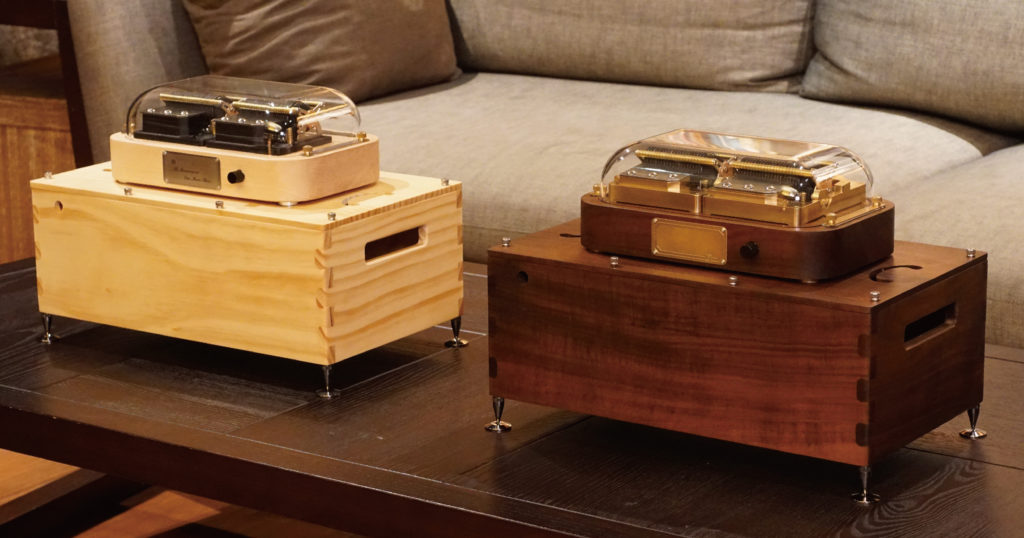Resonance Box Sound Tests on 4 Wood Options; Metal Plate’s Final Design
Muro Box-N40 Update #15
Hello Everyone,
This is Dr. Chen-Hsiang Feng, the following is our latest Muro Box-N40 update’s summary:
1. How we verify the four resonance box design with 4 different solid wood: Millettia Laurentii, Taiwan Acacia, Japanese Cedar, and Pinewood
2. The survey result of new N40 metal plate frame design based on backers feedback
3. The current production status of each part of Muro Box-N40
Compare the Wood Material for the Music Box’s Resonance Box
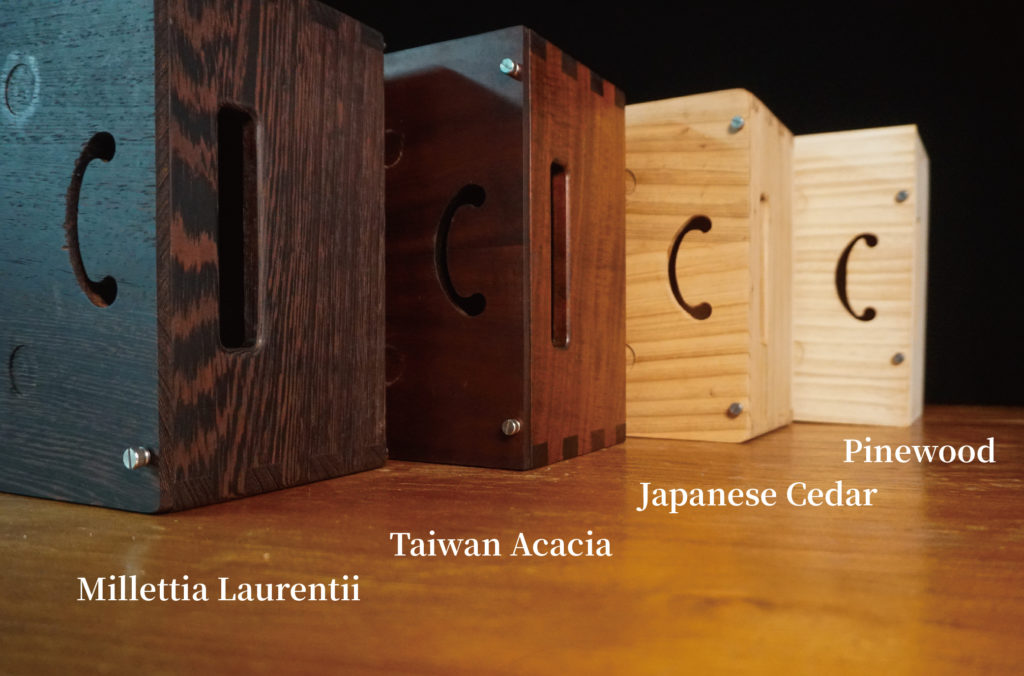
After endless tests and modifications, we finally can present you the video to show all of the options for designing the Muro Box-N40 resonance box and their actual sound effects. We use the Muro Box-N40 Sublime to play the same song on 4 resonance boxes.
We picked this beautiful song, “The Girl Who Fell from the Sky” (a theme song from the famous Japanese animation “Castle in the Sky”) for this demo video because its music arrangement allows listeners to compare how the resonance box sound effects work on notes in higher and lower range.
In fact, in terms of sound, the sound of each resonance box is pleasing to the ear, undoubtedly above average. For example, when the supplier of the metal parts for the music box (Mr. Wang) delivered the goods to our office, I asked him to stay temporarily and compare the sounds of four resonance boxes. Then, he said, “What’s the difference? They all sound the same.”
In other words, if you listen to it every day as I do, you can notice significant differences in the sound details. However, if you suddenly listen to it for a short time as Mr. Wand did, it is likely that you won’t be able to distinguish the differences.

In terms of my personal preferences, considering both sound and appearance, Millettia Laurentii > Taiwanese Acacia wood > Japanese cedar > Pinewood.
However, if we only consider sound, my ranking would be Taiwanese Acacia > Millettia Laurentii > Pinewood > Japanese cedar. This also aligns with the order of hardness of the woods themselves. Music boxes are indeed more suitable for resonance boxes made of hardwood.
Taiwanese Acacia wood is a deep coffee color. Due to additional heat treatment processing, it possesses the highest hardness among all the woods mentioned. The high notes are solid and clear with each note, yet they do not feel as dry or dull as maple.
There’s a proper hint of aftertaste. More importantly, it emits a unique caramel aroma, adding an extra dimension to the experience of appreciating music, creating a distinctive flavor that one can almost “smell the taste of music” when smelling it closely.
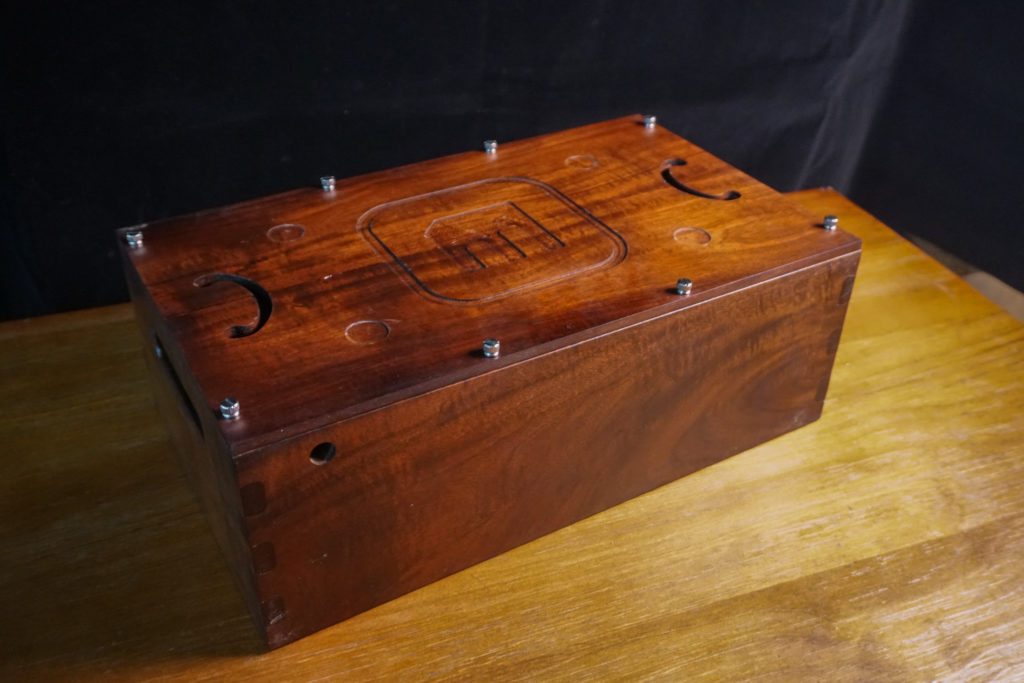
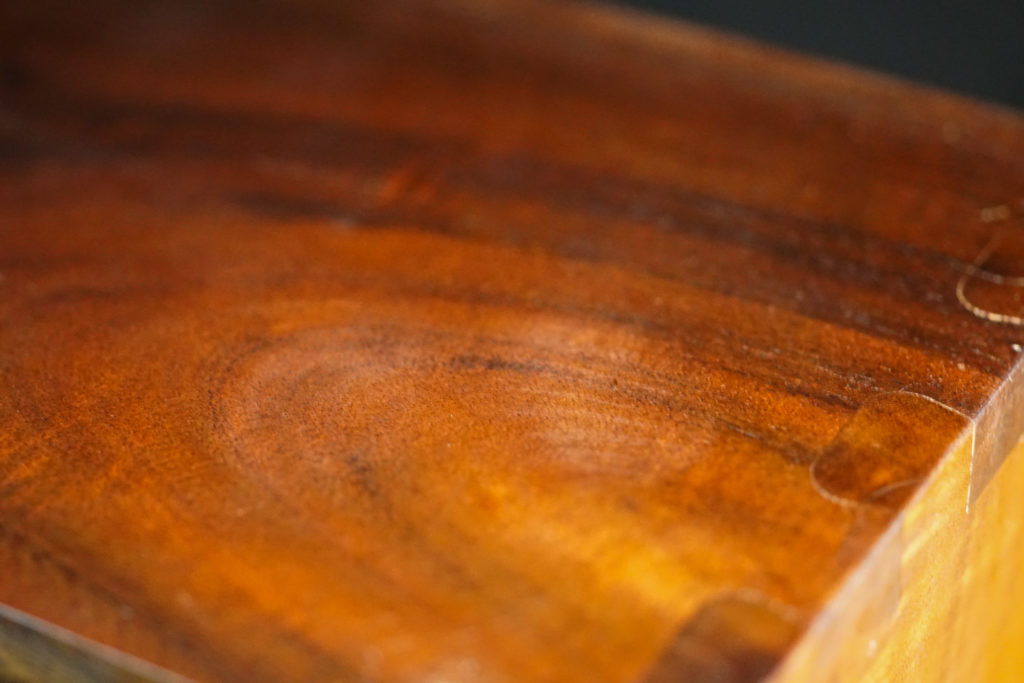
Millettia Laurentii (its Chinese name means “Chicken wing wood”), as its name suggests, features the most pleasing deep black feather-like wood grain. The sound leans towards cleanliness, but it’s slightly more complex than acacia wood, with additional characteristics reminiscent of the wings of chickens.
The residual echoes in the bass are more pronounced, but it doesn’t feel sticky together like pinewood. Apart from the wood itself lacking any noticeable odor, the sound quality is top-notch. I consider it a reliable choice of wood. However, there is one drawback to the appearance of chicken wing wood: the prominent fibrous texture and occasional small pieces of wood may chip off at the edges.
Please note that this flaw is inherent to the material and unavoidable; we will ship it out as standard quality products.
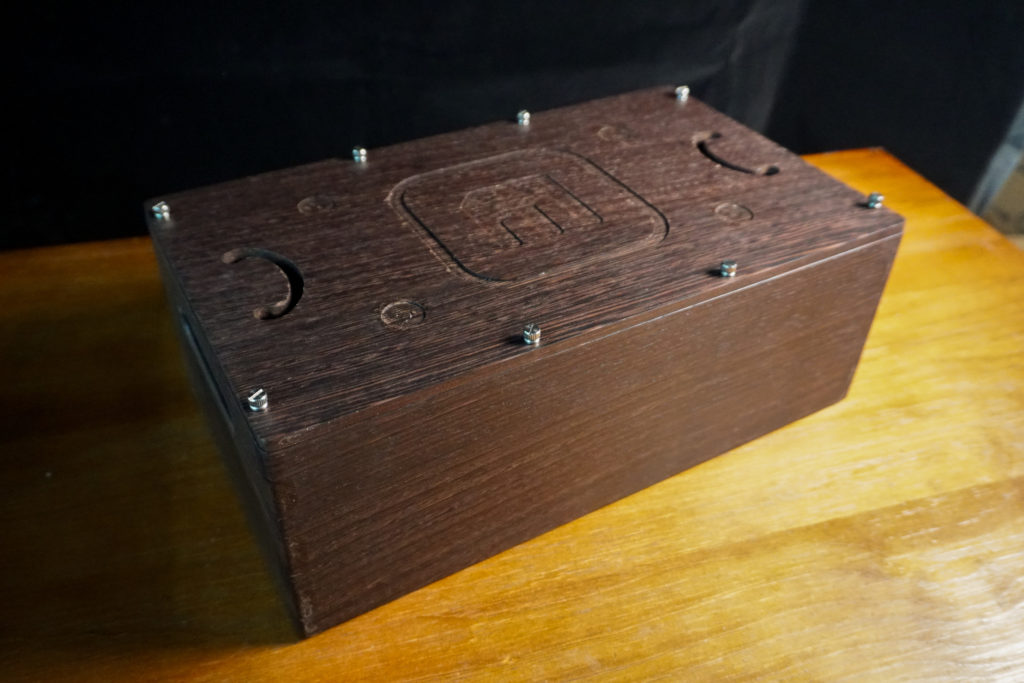
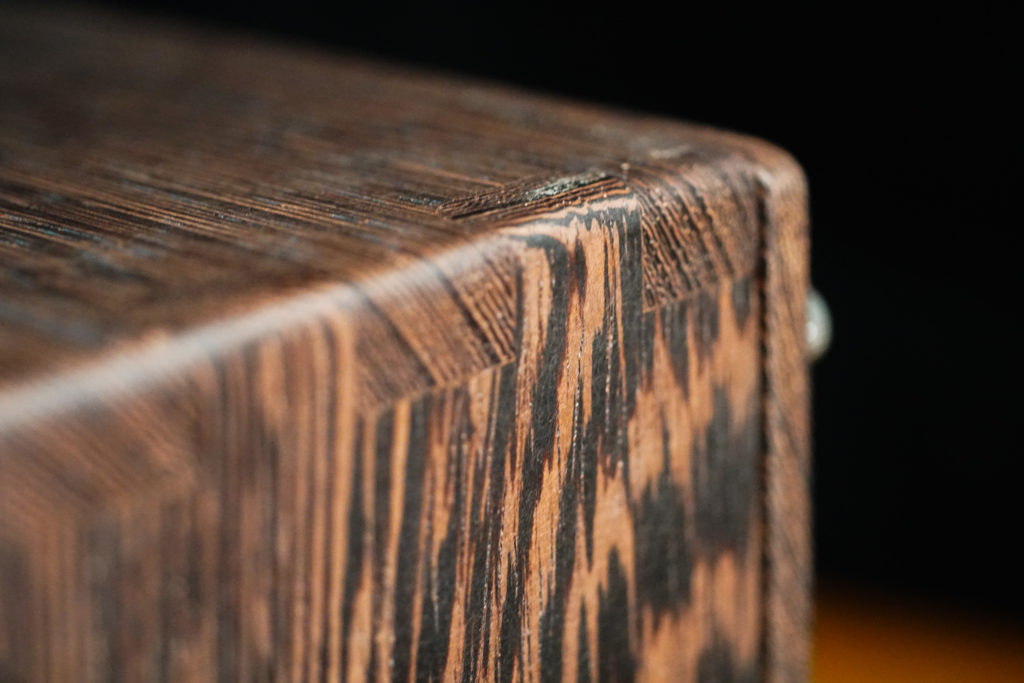
Japanese cedar, after waxing, tends to have a reddish hue with intricate wood grain and a rich aroma. Its sound is very similar to pine wood, and it’s often seen as towering trees planted near Japanese shrines in Japanese anime, making it a highly distinctive wood.
However, its drawbacks are also quite evident. Firstly, it is the softest among the four materials; even light scratching with a fingernail can leave marks. Additionally, it’s unavoidable for cedar to have black spots in its grain, and after waxing, some wood grain blocks become noticeable. While I find it very characteristic, those who seek purity and flawlessness might not accept it.
Finally, because the material is too soft, the sound characteristics include pronounced residual echoes in the bass, yet the wood itself is too light, resulting in a more scattered sound, making it less suitable for use as a musical instrument.
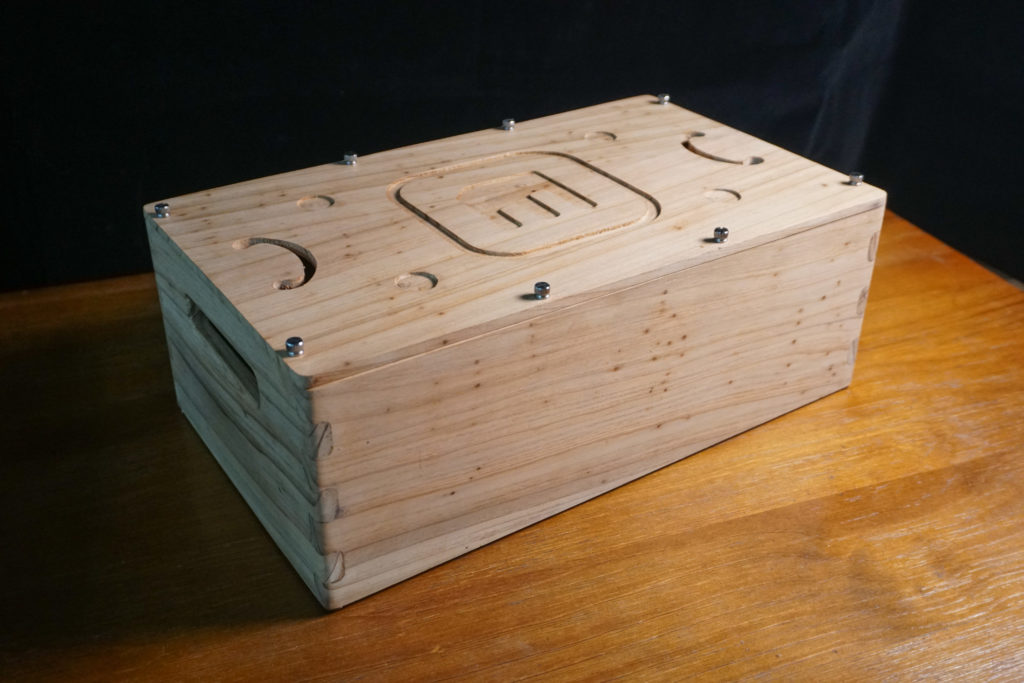
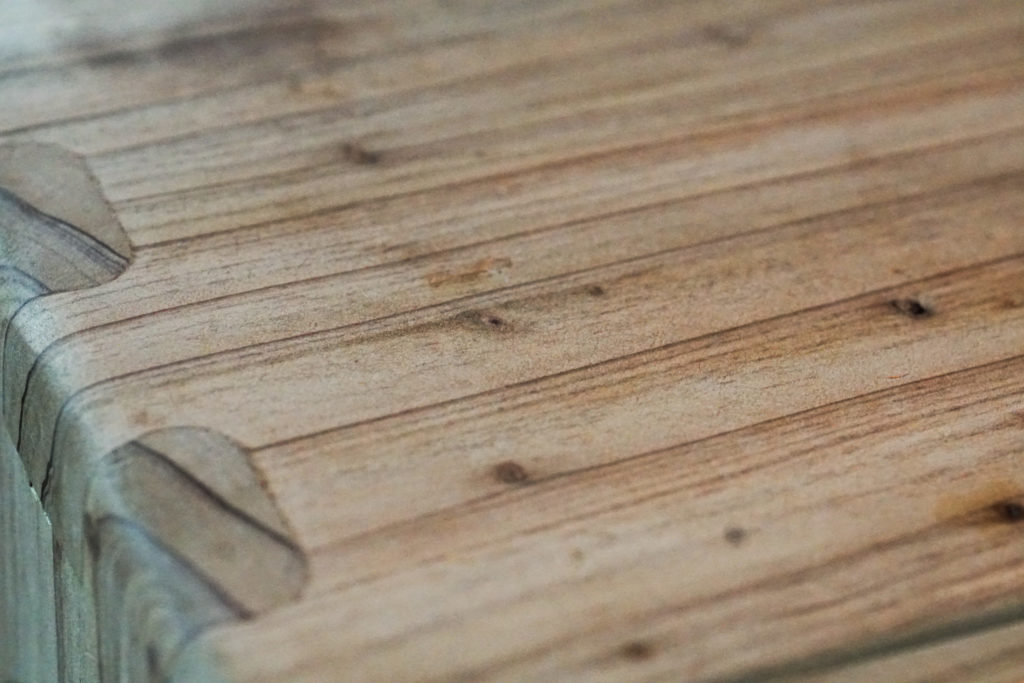
Pinewood has a clean white color, which turns slightly yellow after painting, and this is our standard shipping version. It boasts excellent processing characteristics, is readily available, and has clean wood grain and stable color variation. Its sound characteristics are similar to Japanese cedar but louder and more concentrated.
Despite the noticeable residual echoes due to its low hardness, traditional music boxes emphasize the vibrational sensation of the bass side’s aftertaste. Isn’t the pronounced residual echo precisely the sound characteristic when used as a traditional music box?
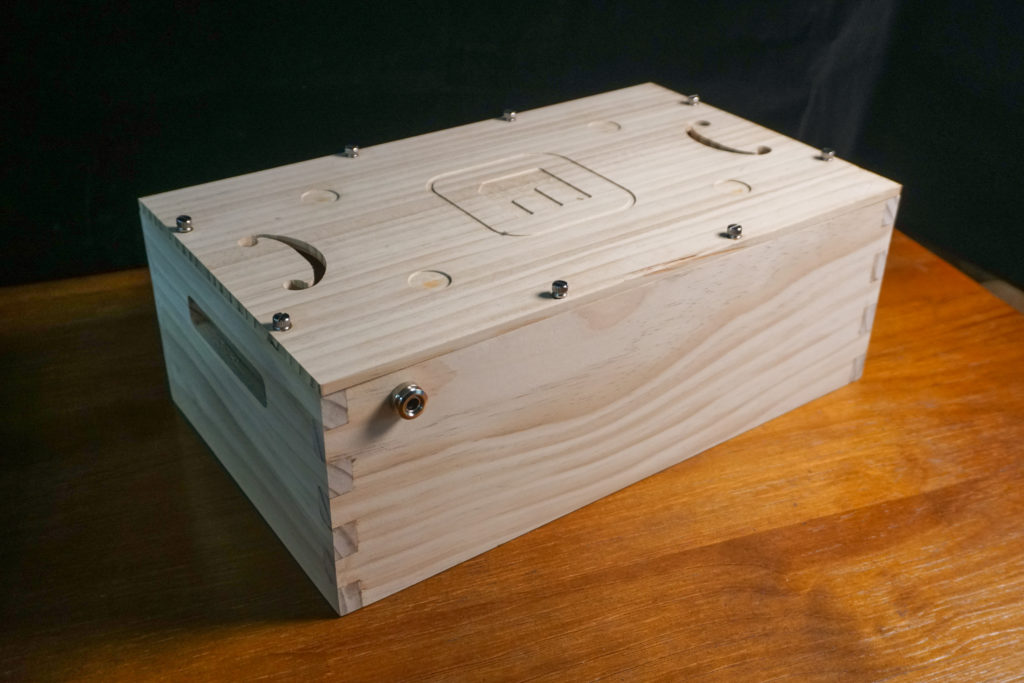
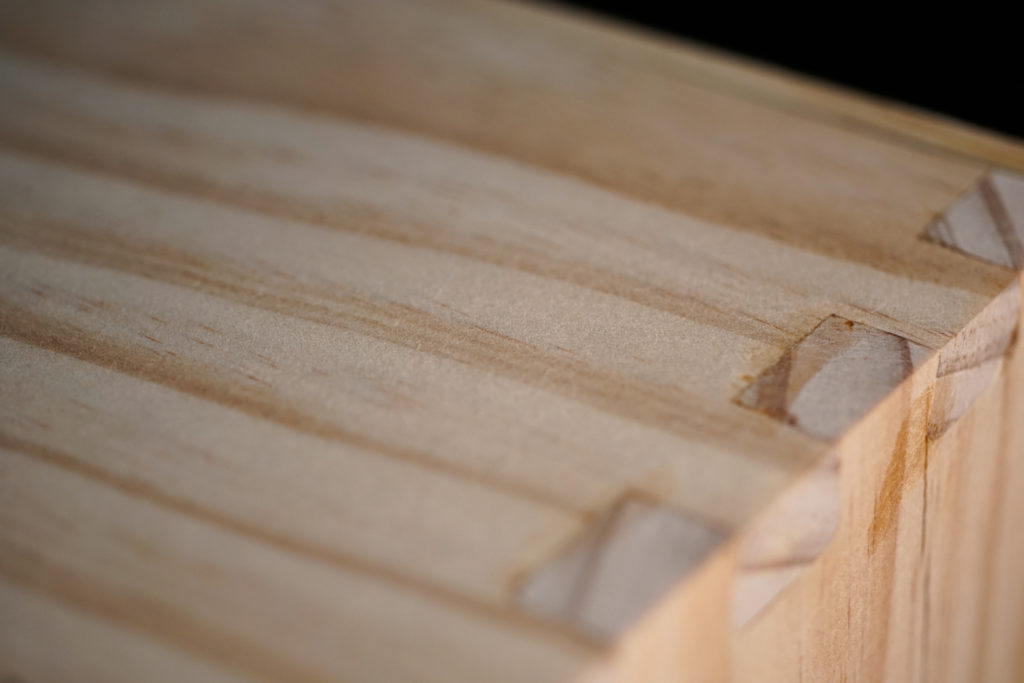
The Finalized Design Details of the Resonance Box
The following are the specifications of the resonance box design:
Size
Before installing the metal stand: 384 x 226 x 137 mm
After install the metal stand:384 x 226 x 173.1 mm
Adding a Muro Box-N40 on top of the resonance box and its metal stand:
384 x 226 x 263.6 mm
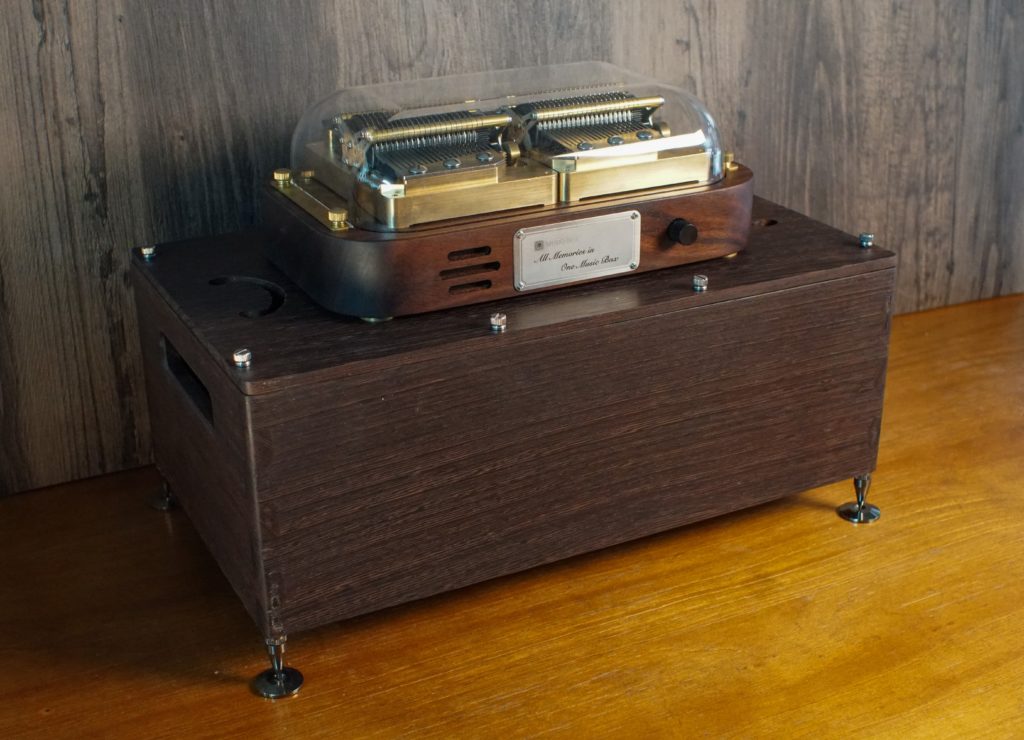
Weight
From the weight difference of the four woods, you can estimate the difference of their density and hardness:
| Wood Species | Weight |
|---|---|
| Japanese Cedar | 1026 g |
| Pinewood | 1422 g |
| Millettia Laurentii (its Chinese name means “Chicken wing wood”). | 2509 g |
| Native Taiwan Acacia Wood | 2611 g |
The N40 Standard weighs 2354 grams, while the N40 Sublime weighs 3943 grams. Therefore, with additional accessories, such as the upgraded resonance box, the total weight of the N40 Sublime package will reach up to 7 kilograms, posing a challenge for international shipping.
Production Method
The resonance box is entirely crafted using CNC, with the body reinforced by mortise and tenon joints, while the top cover is secured with eight hand-twist screws (no screwdriver required). The premium version will feature a hand-applied wood wax oil finish to accentuate the natural wood characteristics. Hand-waxing a single resonance box alone requires over an hour of labor, making it a piece of craftsmanship.
Therefore, if too many people opt for the paid upgrade, scheduling manpower for waxing in March could pose a challenge.
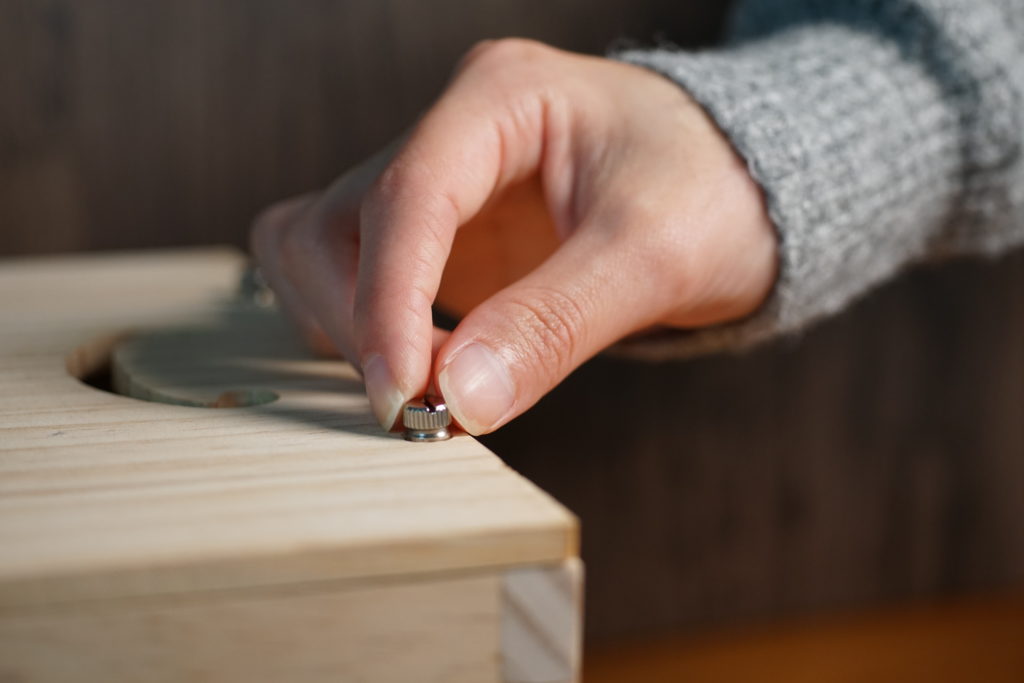
Your Choice?
Due to the difficulty in sourcing Taiwanese Acacia wood, for this batch of crowdfunding shipments, we will offer Millettia Laurentii (chicken wing wood) as the paid option for the dark resonator box. Through testing, we found that while Japanese cedar is visually and aromatically distinctive, its sound quality is slightly inferior.
Therefore, it “will not” be included as a paid upgrade option. Hence, for this crowdfunding shipment, the only upgrade option for the resonator box is chicken wing wood. For the upgraded version of the resonator box, we will apply a handcrafted wood wax oil finish.
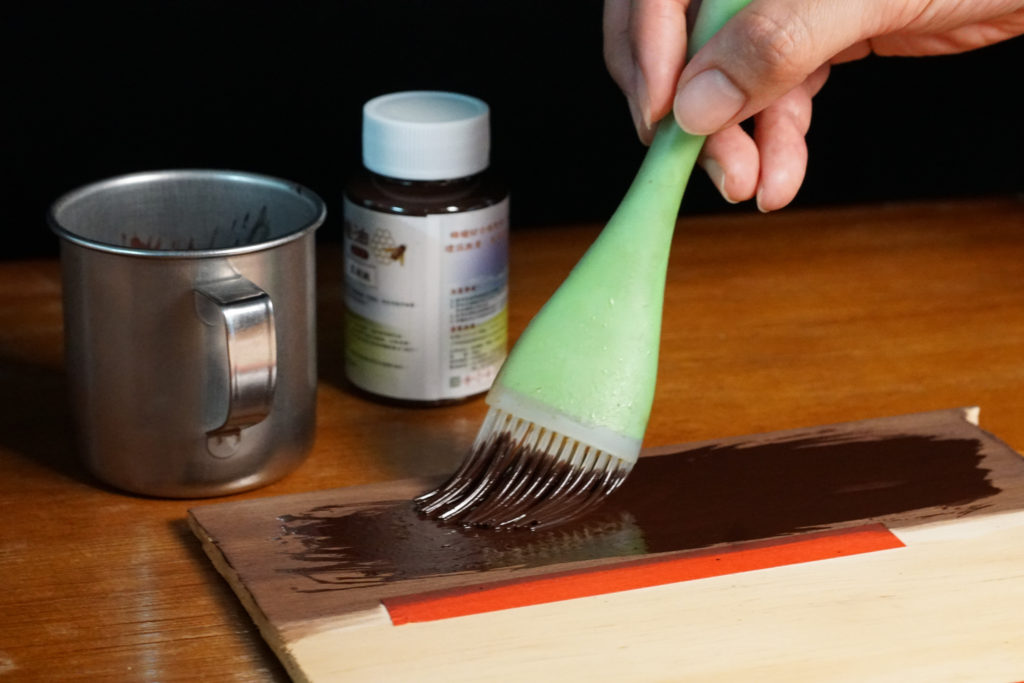
As for the free pine wood option, it will not have any surface coating. You can choose to paint it with your preferred color in the future. Below is a comparison of the colors between transparent wax and black walnut-colored wax that we tested, provided for your reference when you decide to DIY in the future.
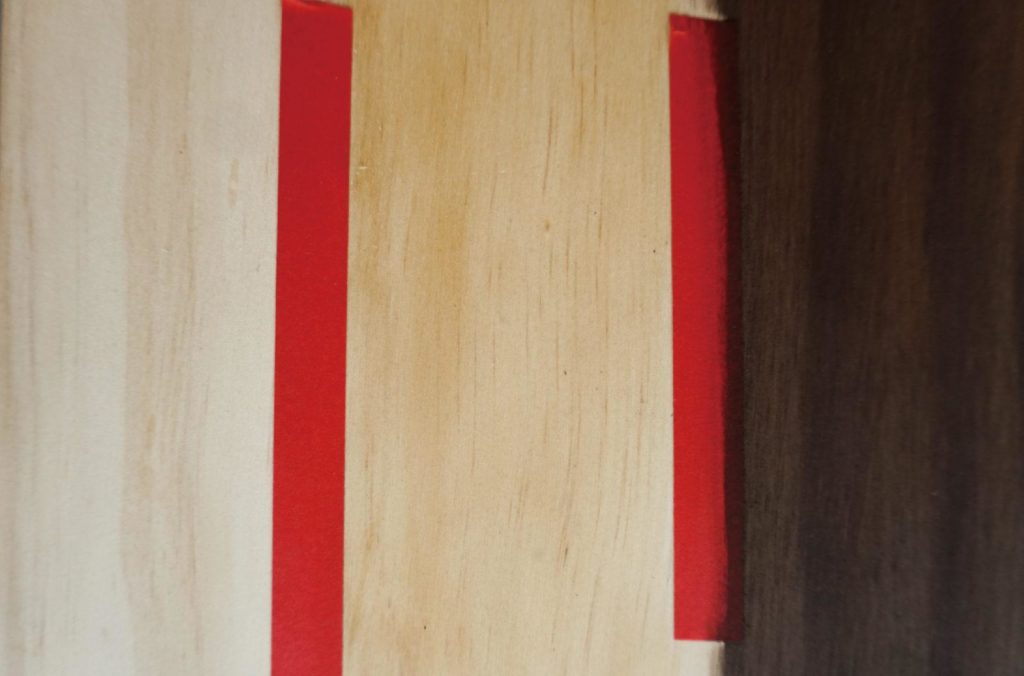
If you truly prefer not to have a natural wood surface but also don’t want to paint it yourself, we will also offer an optional add-on for spray painting with clear or black walnut-colored paint (spray paint, not waxing) for you to choose from.
Once we receive the final production quotes from our suppliers, we will proactively reach out to all backers by the end of February to inquire about your final choices and provide information on international shipping methods and pricing.
We will then send you a payment request through a Stripe-exclusive payment link.
Each material has different visual, auditory, and even olfactory characteristics. You can trust that every version will have above-average sound quality.
All you need to do is evaluate your genuine needs and make the decision that you like best. The price of the wood is determined by others, but its true value comes from within you. If you love it, then it’s the best material for you.
Metal Plate’s Frame Design
In Muro Box-N40 update #14, three new metal plate’s frame design options were provided for backers to choose from. We received responses from 54 customers, and the statistical results are as follows:
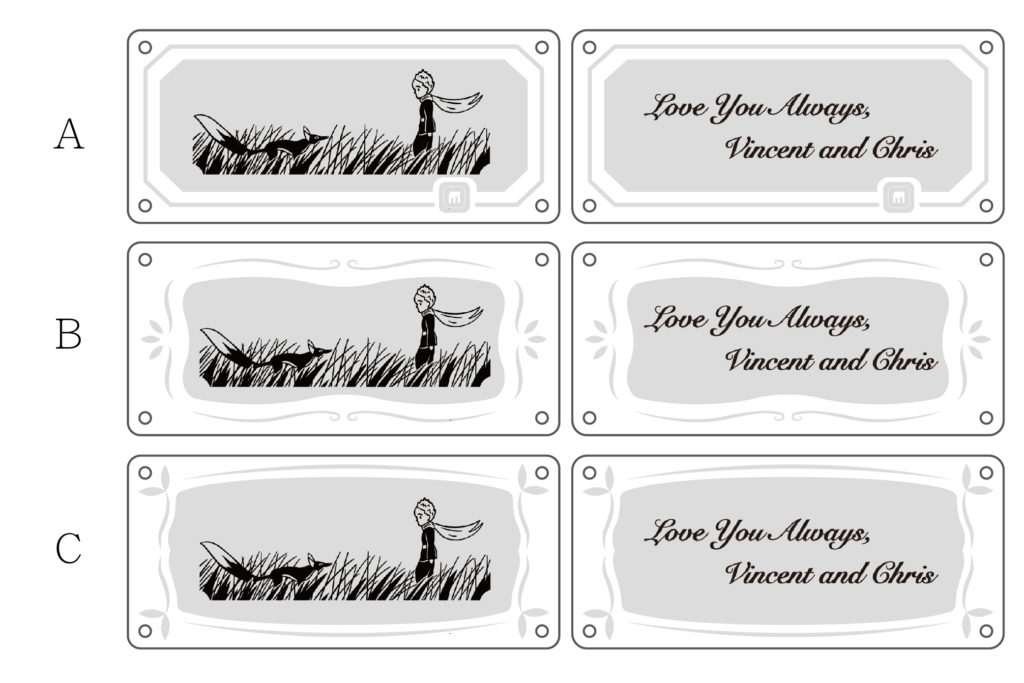
Responses from the Chinese readers:
A – 9 respondents, B – 10 respondents, C – 10 respondents
Responses from the English readers:
A – 15 respondents, B – 2 respondents, C – 8 respondents
Total:
A – 24 respondents (45%), B – 12 respondents (23%), C – 18 respondents (34%)
In the responses from Chinese readers, it can be seen that preferences for the three borders are quite evenly distributed. However, in the responses from English readers, there is a preference for the square border.
We have received feedback from customers regarding dimensions, materials, and even opinions on whether the Muro Box logo should be included on the plaque. The style will be determined by the total number of votes for option “A” from both Chinese and English readers in the survey. The border of option “A” is an elegant octagonal shape with a small logo in the bottom right corner.
We appreciate the input from our customer Joeri from the Netherlands, who explained his choice of option “A”: “About the design of the logo: personally I prefer the one with The Muro Box logo. In my opinion, it’s important to let you know who you are (directly).”
Do you share the same opinion as Joeri thinks?
Regarding materials, we want to thank our customer, Eason L. who wrote this suggestion, “For the N40 Murou Edition plaque, I suggest using brass to pay homage to the 100-note music box in update #11 and to complement the brass base with a delicate texture.”
I believe this is a feasible suggestion. Therefore, the metal plate for the Muro Box-N40 Sublime edition will be made of brass (solid, not plated). However, we will need to confirm with the supplier. The main issue is that the plaque border needs to be etched, but the quantity of a few hundred pieces may be too small to find a supplier, so there is still some risk of changes.
The Production Status Summary of Muro Box-N40 Music Box
Wood Box
The maple standard version of the N40 wooden box is already in production on the assembly line. However, the Taiwanese acacia wood for N40 Sublime edition is scheduled to enter production in March since the raw materials from the supplier have not yet been received.
Resonance Box
The design is completed, and we are waiting for a quotation to confirm orders and commence production.
Packaging
Since the N40 model will use the resonance box as its packaging box, the design process for the outer color box has already begun. We anticipate completing the design together with the user manual by the end of February for production.
The Brass Base for N40 Sublime Edition
Production has been completed, and after the Lunar New Year, it will be sent to the processing factory for sandblasting and rust prevention treatment.
Circuit Board
The design is completed and sample verification has been done. We will begin safety compliance testing by the end of February, with plans to start production in early March.
Final Assembly
We have finalized the assembly arrangements with Kyooh Precision Industry Co., Ltd (located in Taichung). The process will involve pre-assembly of the patented cylinder in our Taipei office, and then total assembly will take place in Taichung, followed by quality control inspection and shipping back to our Taipei office. Pre-assembly of the patented cylinder part has already begun in Taipei.
In summary, all parts’ progress is well under control, and our target for shipping starts in April remains unchanged. Please rest assured.
Subscribe / Question for N40
